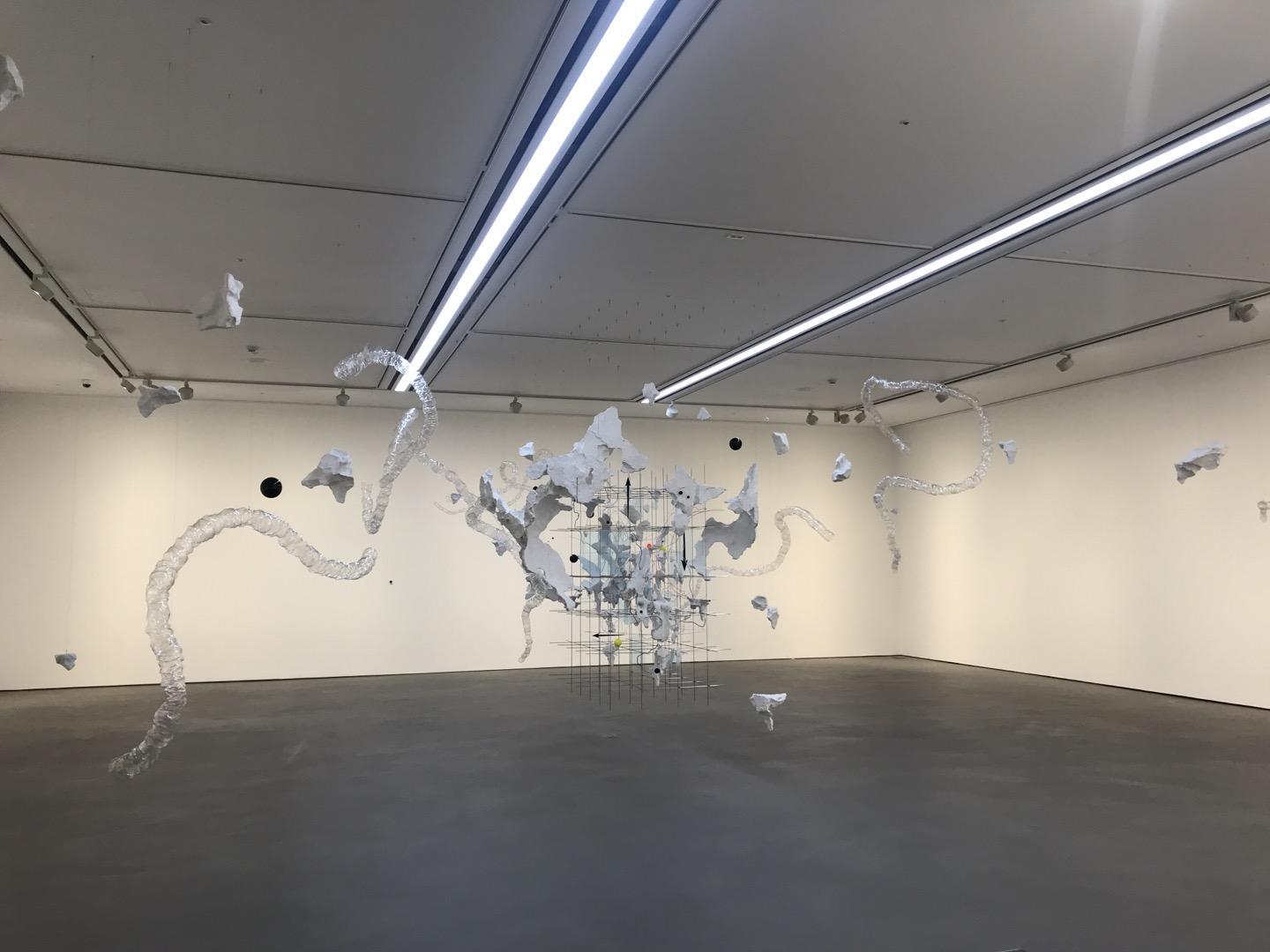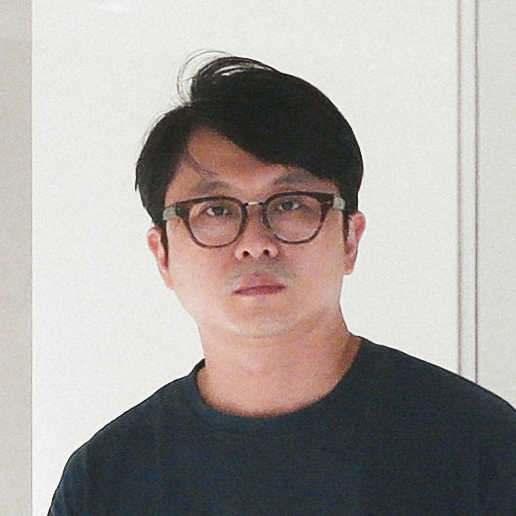
After Korea recovered from the 1997 currency crisis, the country’s contemporary art scene faced many changes in the 2000s. With a growing emphasis on the cultural economy, the government developed a number of cultural policies to support underrepresented artists. Several alternative spaces that fostered new movements in the Korean contemporary art landscape appeared, and the art market began to flourish alongside the emergence of new art fairs and auction houses.
Three artists who began their careers in the late 1990s and early 2000s and played significant roles in developing the Korean contemporary art scene were featured in the exhibitions listed below.
 Installation view of Hyungkoo Lee's solo exhibition "Chemical" at Doosan Gallery, Seoul. Photo by Aproject Company.
Installation view of Hyungkoo Lee's solo exhibition "Chemical" at Doosan Gallery, Seoul. Photo by Aproject Company.
The Busan Museum of Art, located in Busan city on the southeastern tip of the Korean Peninsula, introduced Hyungkoo Lee as the fourth artist in the institution’s special exhibition program highlighting influential Korean contemporary artists. The exhibition was a retrospective of the artist’s work from the previous two decades. It was held from March 29 through August 7, 2022.
Hyungkoo Lee (b. 1969), who takes a pseudo-scientific approach to his works, explores the human body through his sculptures and installations. His earlier series, including The Objectuals and Animatus, exaggerate body parts with prosthetic devices or create skeletons of famous cartoon characters. His recent works, such as Kiamkoysec and X variation, take a more abstract form.
Lee enlarges skeleton-like structures that resemble an excavation or scatters fragments of small fossil-like pieces in the exhibition space to create different landscapes as the viewer moves and observes the way our bodies are perceived in motion. Through these works, Lee examines the human body’s limitations and potential.
Lee’s works have been exhibited at leading art institutions in Korea, including the National Museum of Modern and Contemporary Art Museum, Seoul (2017), the Buk-Seoul Museum of Art (2018), and the Busan Museum of Art (2013). Furthermore, he represented Korea at the 52nd International Art Exhibition of La Biennale di Venezia in 2007.
 Osang Gwon, 'New Structure 4 Prism & Macallan,' 2014, Inkjet print, Aluminum, 108.2 x 77.5 x 124.4 in
Osang Gwon, 'New Structure 4 Prism & Macallan,' 2014, Inkjet print, Aluminum, 108.2 x 77.5 x 124.4 in
Osang Gwon x OURLABOUR was featured at the Suwon Art Space Gwanggyo, one of the four venues of the Suwon Museum of Art, from February 18 to May 15, 2022. Artist Osang Gwon (b. 1974), known for his “Photography Sculpture,” collaborated with OURLABOUR, a visual solution group focusing on designing visual art experiences. Suwon is located south of South Korea’s capital, Seoul.
Osang Gwon’s main focus is “sculpture.” His distinctive creation of three-dimensional forms through photography has opened new possibilities for the genre. His works now range from photography, sculpture, collage, and graphics to installations as he experiments with the concept of sculpture.
His frequent use of luxurious advertisement images in his three-dimensional works reflects our contemporary culture and values, such as consumerism and capitalistic desire.
Gwon, a participant in K-ARTIST.COM, an online archive and art market platform that aims to raise global recognition of acknowledged Korean artists, has held solo shows at the Arario Museum in Korea, the Manchester Art Gallery in the UK, and the Okinawa Contemporary Art Center in Japan. His works are in the collections of several art institutions, including the Leeum, Samsung Museum of Art, the Singapore Museum of Art, and the Zabludowicz Collection (UK).
 Installation view of Sungsic Moon's solo exhibition "Life" at Kukje Gallery in Busan. Courtesy of the artist and Kukje Gallery.
Installation view of Sungsic Moon's solo exhibition "Life" at Kukje Gallery in Busan. Courtesy of the artist and Kukje Gallery.Sungsic Moon’s (b. 1980) solo exhibition, Life, was on display at the Kukje Gallery’s Busan branch through February 28, 2022. The show featured more than a hundred drawings and paintings. Most of the works were the artist’s new “oil drawings” that depict scenes and memories from his daily life. In addition to the large-scale rose paintings, some of his earlier works were also on display.
Sungsic Moon is an artist known for using fundamental art techniques, processes, and materials, especially pencils. In his new “oil drawing” series, Moon uses pencils to carve and draw directly into wet paint. He captures the most mundane moments of his everyday life to express improvisation, simplicity, and naturalness.
His works reveal the artist’s psychological landscape based on his memories.
At twenty-five years old, Moon was the youngest Korean artist to participate in the Korean Pavilion at the 2005 Venice Biennale. Moon’s works are in the collections of many Korean art institutions, including the Leeum, Samsung Museum of Art, the Hite Collection, and the Doosan Art Center.






















